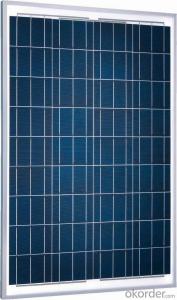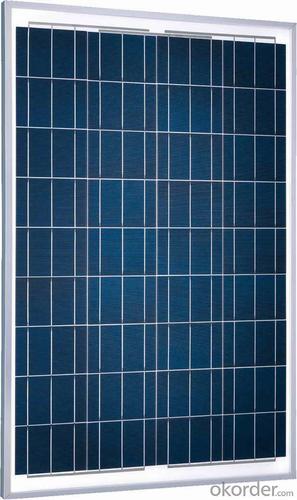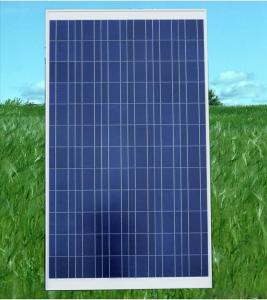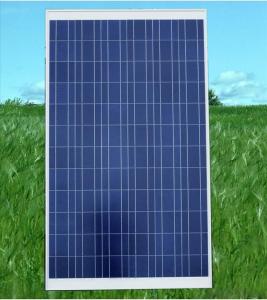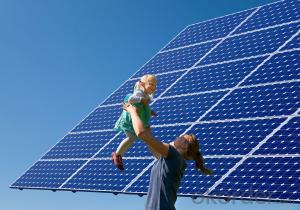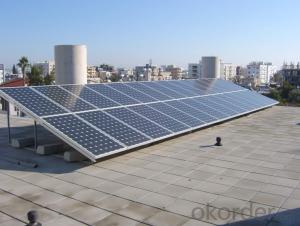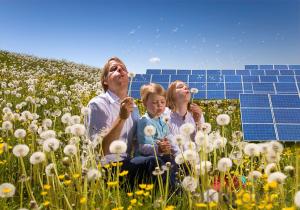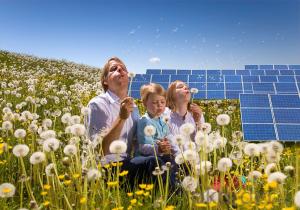Ies Solar Panels - Silicon Polycrystalline Solar Panel 305WP
- Loading Port:
- Shanghai
- Payment Terms:
- TT OR LC
- Min Order Qty:
- 180000 watt
- Supply Capability:
- 10000000 watt/month
OKorder Service Pledge
OKorder Financial Service
You Might Also Like
Specification
Solar cell module production process
In order to become a leader in the solar industry,it is vital to constanly improve existing technology and quality. Tainergy is extremely proud of its state-of-the-art R&D team,which is staffed with highly qualified engineers and specialists from the most prestigious research institutes and industrial organizations in Taiwan.Providing superior performance and reliable quality that always exceed our customers’ exoectations is our commitment.
FAQ:
1. How long will my inquiry get response?
Your inquiry related to our products or prices will be replied within 24 hours.
2. Can I get professional service and suggestion?
Well-trained and experienced staffs to answer all your questions in fluent English.
3. Do you accept OEM or customized design?
OEM & ODM, any your customized lightings we can help you to design and put into product.
4. What if I need specific design?
Distributorship are offered for your unique design and some our current models.
About us
We are a high-tech group wich specializes in solar products design,research, manufacture, sales,solar projects design and installation.
Our national sales service covers seven parts, including northeast, north, east, middle, south, northwest and southwest, international sales covers five continents and over forty countries, including Germany, Italy, Spain, France, America and Brazil etc.
We now provide Polycrystalline Silicon Solar Module;Thin Film Solar Module;Monocrystalline Silicon Solar Module Feature of our product
High conversion efficiency mono/poly-crystalline amorphous silicon solar cells
Modules incorporate high performance bypass diodes to minimize the power drop caused by shading
High transmittance, low-iron tempered glass
High performance EVA resin to prevent destroying and water.
AI frame: without screw, corner connection. 8 holes on the frame can be installed easily
Good performance of preventing from atrocious weather such as wind and hails
Certifications: CE IEC TUV VDE, Class I
10 years 90% output warranty
25 years 80% output warranty
Depends on various demands from different customers, CNBM could supply any kinds of service to meet you, please feel free to contact us at any time.
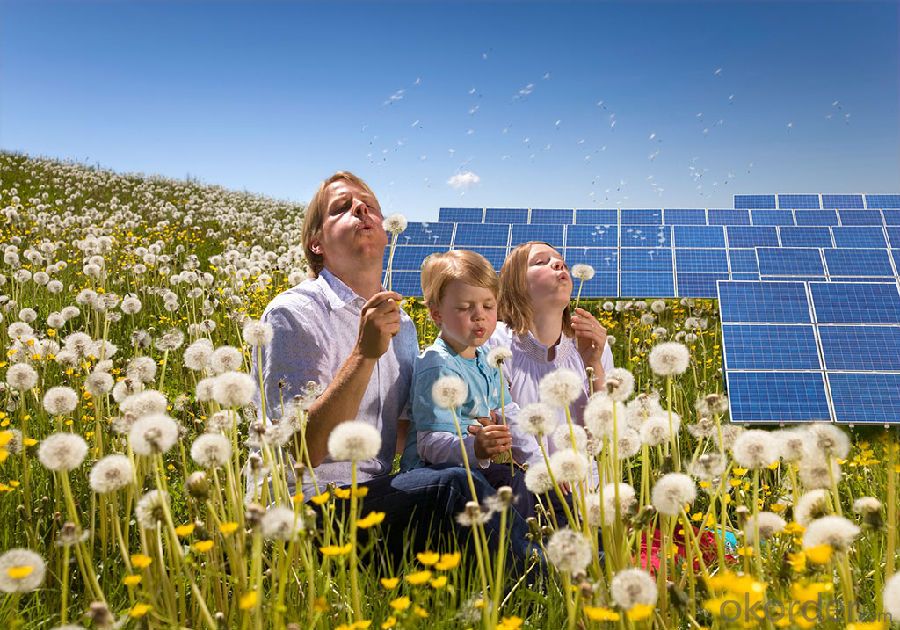
With the company crossing the threshold of 1 GW installations in 2013 and with 700 MW installed in 2014 alone, the photovoltaic modules from CNBM SOLAR are successfully used by satisfied customers in a large number of projects all around the world – from small residential systems up to utility scale systems. On this page you will find a selection of projects in the residential, industrial / commercial and utility segments featuring CNBM SOLAR high quality mono- and polycrystalline solar modules, deployed in different countries worldwide.
- Q: Are there any disadvantages to using solar panels?
- Yes, there are a few disadvantages to using solar panels. Firstly, the initial installation cost can be relatively high, making it a less affordable option for some individuals or businesses. Additionally, solar energy production relies on sunlight, which means that solar panels are less effective during cloudy or rainy days, or at night. This intermittency requires a backup energy source or energy storage system, adding to the overall cost. Moreover, solar panels require a significant amount of space for installation, which may not be feasible in densely populated areas. Lastly, the manufacturing process of solar panels can have environmental impacts, as it involves the use of certain materials and chemicals. However, it is worth noting that continuous advancements in technology are reducing these disadvantages, making solar panels an increasingly viable and sustainable energy solution.
- Q: Can solar panels be installed in areas with high seismic activity?
- Yes, solar panels can be installed in areas with high seismic activity. However, special considerations need to be taken into account during the installation process to ensure their stability and durability. Reinforced mounting systems and appropriate anchoring methods can be utilized to enhance the resistance of solar panels to seismic events. Additionally, regular inspections and maintenance should be conducted to identify and address any potential issues that may arise due to seismic activity.
- Q: How much space do solar panels require?
- The amount of space required for solar panels can vary depending on factors such as the type and size of the panels, their efficiency, and the energy needs of the system. On average, an average-sized residential solar panel system typically requires around 100-400 square feet of roof space. However, ground-mounted systems can require larger areas, and more efficient panels can generate the same amount of electricity in a smaller space.
- Q: Can solar panels be installed in areas with high winds?
- Yes, solar panels can be installed in areas with high winds. However, it is important to design and install the solar panel system with wind load considerations. Proper anchoring and structural support should be implemented to ensure the panels can withstand strong winds without causing any damage.
- Q: Can solar panels be damaged by hail or other elements?
- Yes, solar panels can be damaged by hail or other elements. Hailstones can cause cracks or dents on the surface of the panels, reducing their efficiency. Additionally, other elements like strong winds, debris, or extreme weather conditions can also potentially damage solar panels. However, modern solar panels are designed to withstand various weather conditions and are often tested for durability.
- Q: Can solar panels power my entire home?
- Yes, solar panels have the potential to power your entire home, depending on various factors such as the size of your solar panel system, the amount of sunlight in your area, your energy consumption patterns, and the efficiency of your appliances. It is important to consult with a solar professional to assess your specific energy needs and design a system that can meet your requirements.
- Q: How do solar panels affect the property taxes?
- Solar panels can potentially affect property taxes in a couple of ways. In some states or localities, installing solar panels may increase the assessed value of a property, leading to higher property taxes. However, other jurisdictions offer exemptions or incentives that can reduce or eliminate the increase in property taxes associated with solar panel installations. It is advisable to consult with local tax authorities or experts to understand the specific impact on property taxes in a particular area.
- Q: Can solar panels be used for camping or outdoor activities?
- Yes, solar panels can be used for camping or outdoor activities. Portable solar panels are designed specifically for such purposes and provide a convenient and eco-friendly way to generate electricity in remote locations. They can charge batteries or power devices directly, allowing campers to have access to electricity even when they are away from traditional power sources.
- Q: I'm trying to charge rechargeable AA batteries with a solar panel. What gauge wire should I use to connect the panel to the batteries? I know I'm not going to have a lot of current going through so the wire size doesn't really matter. Can the wire be too thick thoShould I ugh? Should I use a diode to keep the batteries from overpowering the circuit? If so, what size diode? My panel is 4.8V 50mA. Can I just hook the panel straight into the batteries or do I need something else?
- In order: .? Just about any wire will do.? You can handle 50 mA over just about anything, even 28 gauge telephone wire.? Your biggest problems are probably going to be mechanical stress (you want stranded wire instead of solid, to avoid breakage) and dealing with the size of larger wires. 8 gauge speaker wire may be a good optimum. 2.? You need a diode.? If you're charging NiMH or NiCd cells you're going to have about .25 volts/cell; you can charge up to 3 of them in series with a 4.8 volt panel.? The solar panel is a bunch of diodes itself, but they're leaky in the reverse direction; the diode prevents the batteries from discharging themselves back through the panel.? You want a Schottky-barrier diode, because the forward voltage drop is about 0.2 volts instead of 0.7 volts for a regular silicon rectifier.? This gives you maximum current output from your panel.
- Q: when building a solar panel should the diode be on the positive or negative sidelittle more detail i just built a solar panel and im running it to a grid tie converter should i put diodes in if i add another panel or are they only for battery systems?
- the blocking diode goes on the positive side
Send your message to us
Ies Solar Panels - Silicon Polycrystalline Solar Panel 305WP
- Loading Port:
- Shanghai
- Payment Terms:
- TT OR LC
- Min Order Qty:
- 180000 watt
- Supply Capability:
- 10000000 watt/month
OKorder Service Pledge
OKorder Financial Service
Similar products
Hot products
Hot Searches
Related keywords
